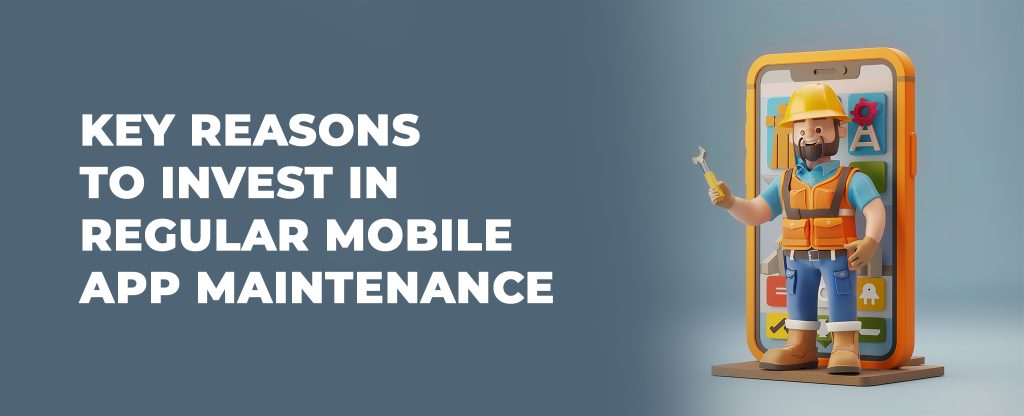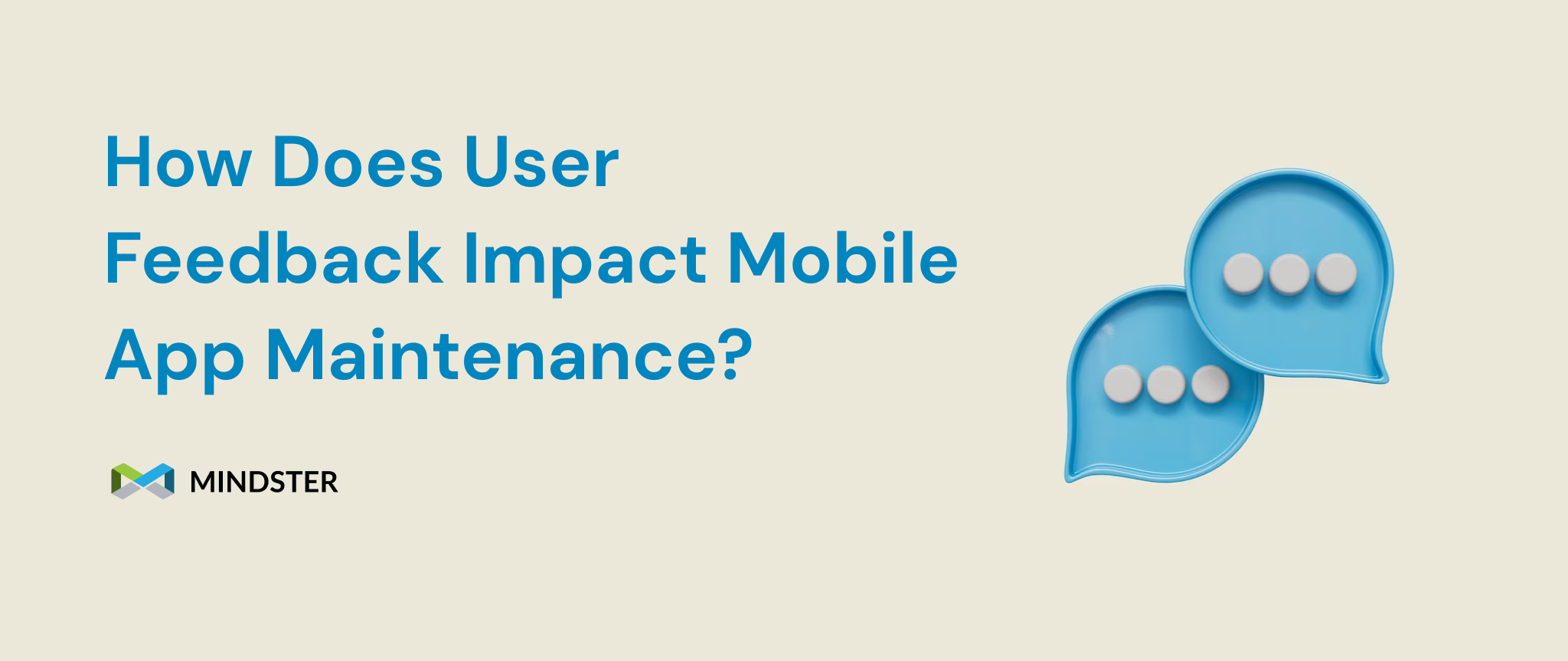Key Reasons to Invest in Regular Mobile App Maintenance
28 May 25 


Ever downloaded an app that worked perfectly for months, then suddenly started crashing every time you opened it?
Or maybe you’ve tried using an app that takes forever to load, drains your battery, or looks broken on your new phone? These frustrating experiences don’t happen by accident – they’re the result of poor app maintenance.
Let’s have a reality check.:
25% of users abandon an app after just one use if it doesn’t work properly. Another 71% will uninstall an app if it crashes, freezes, or has errors. The question isn’t whether you can afford to maintain your app , it’s whether you can afford not to.
Building an app is just the beginning. Like a car that needs regular oil changes and tune-ups, mobile apps require ongoing care to stay functional, secure, and competitive.
Key Takeaways
- Why app maintenance is crucial for business success and user retention
- Security risks that emerge without regular updates
- Performance issues that drive users away
- Cost comparison between maintenance and rebuilding from scratch
- Best practices for keeping your app running smoothly
- Real-world impact of neglecting app maintenance
- How to create an effective maintenance strategy
What is Mobile App Maintenance?
Mobile app maintenance involves regularly updating, fixing, and improving an app after it’s been launched. Think of it as ongoing healthcare for your app – checking for problems, fixing issues before they become serious, and making improvements based on user feedback.
Maintenance includes four main types of work: fixing bugs that users report, adapting to new operating systems and devices, improving features based on user behavior, and preventing problems before they happen. It’s different from initial development because it focuses on keeping existing functionality working rather than building new features from scratch.
Most businesses budget heavily for app development but forget about maintenance costs. This is like buying a car and never budgeting for gas, insurance, or repairs – it’s going to cause problems down the road.
Security: Your First Line of Defense
Mobile apps are constant targets for hackers. Every month, new security vulnerabilities are discovered in operating systems, third-party libraries, and app frameworks. Without regular security updates, your app becomes an easy target.
Consider what happened to Equifax – a single unpatched vulnerability led to a massive data breach affecting 147 million people. While that was a web application, mobile apps face similar risks. Payment apps, social media platforms, and any app handling personal data are particularly vulnerable.
Regular maintenance includes updating security patches, fixing vulnerabilities, and ensuring compliance with data protection laws like GDPR and CCPA. The cost of a security breach – both financial and reputational – far exceeds the cost of regular security maintenance.
Performance That Keeps Users Happy
Nobody has patience for slow apps. Users expect apps to load in under 3 seconds, and every additional second of loading time increases abandonment rates by 32%.
App performance degrades over time for several reasons. Memory leaks accumulate, causing apps to use more RAM and battery. Code becomes less efficient as new features are added without optimization. Background processes start consuming more resources.
Regular performance maintenance includes optimizing code, reducing app size, improving loading times, and fixing memory issues. Users might not notice when an app is well-maintained, but they definitely notice when it isn’t.
Staying Compatible with New Technology
Apple and Google release new operating system versions every year, and users upgrade their devices regularly. Each new OS version can break existing app functionality if the app hasn’t been updated to match.
New devices come with different screen sizes, processing power, and features. An app that works perfectly on an iPhone 12 might look terrible on an iPhone 15 Pro Max without proper maintenance. Android fragmentation makes this even more challenging, with hundreds of different device configurations to consider.
Regular compatibility updates ensure your app works on new devices and operating systems. This isn’t just about functionality, it’s about taking advantage of new features that can improve user experience.
Bug Fixes: Small Problems, Big Impact
Every app has bugs. Some are obvious from day one, others only appear after specific user actions or environmental conditions. User feedback constantly reveals new issues that need fixing.
The key is prioritizing bugs based on their impact. A bug that causes the app to crash affects every user and needs immediate attention. A minor display issue on one specific device model can wait for the next scheduled update.
Successful apps have systems for collecting bug reports, prioritizing fixes, and pushing updates quickly. The longer bugs stay unfixed, the more users you lose and the harder it becomes to maintain your app’s reputation.
User Experience: Evolving with User Needs
User expectations change over time. Features that seemed innovative two years ago might feel outdated today. User behavior data reveals which features are popular and which are ignored.
Regular UX maintenance involves analyzing user behavior, implementing requested features, and removing or improving underused functionality. This might mean redesigning navigation, adding new features, or simplifying complex processes.
The most successful apps continuously evolve based on user feedback and behavior data. This isn’t about major overhauls – it’s about making small, consistent improvements that add up to a better user experience.
Business Impact: Revenue and Reputation
Poor app maintenance directly impacts your bottom line. App store ratings drop when users encounter bugs or performance issues. Lower ratings mean fewer downloads and less revenue.
The cost of acquiring new users is much higher than retaining existing ones. A well-maintained app keeps users engaged and reduces churn. Users who have good experiences are more likely to recommend your app to others.
App downtime or major bugs can cause immediate revenue loss, especially for e-commerce or subscription-based apps. The longer problems persist, the more users you lose to competitors.
Maintenance vs. Rebuilding: The True Cost
Many businesses skip regular maintenance to save money, then face huge costs when their app becomes unusable and needs complete rebuilding. This is like never changing your car’s oil, then being surprised when the engine fails.
Regular maintenance typically costs 15-20% of initial development costs per year. Complete app rebuilding can cost 70-100% of the original development budget. The math is clear – maintenance is much more cost-effective than rebuilding.
Annual maintenance costs typically include:
- Security updates and patches
- OS compatibility updates
- Bug fixes and performance optimization
- Feature updates based on user feedback
- App store compliance and submissions
Rebuilding costs include:
- Complete code rewrite
- New design and user experience
- Extended development timeline
- Lost users during downtime
- Damaged brand reputation
Best Practices for App Maintenance
Create a maintenance schedule: Plan regular updates rather than waiting for problems to occur. Monthly minor updates and quarterly major updates work well for most apps.
Monitor app performance: Use analytics tools to track crash rates, loading times, and user behavior. Set up alerts for critical issues so you can respond quickly.
Collect user feedback: Make it easy for users to report bugs and suggest improvements. Regular user surveys can reveal issues before they become major problems.
Test thoroughly: Every update should be tested on multiple devices and operating system versions before release. Automated testing can catch many issues early.
Keep documentation updated: Maintain clear records of changes, known issues, and update schedules. This makes maintenance more efficient and helps new team members understand the app.
Future-Proofing Your Investment
Technology changes quickly. New frameworks, development tools, and user expectations emerge regularly. Regular maintenance helps your app adapt to these changes gradually rather than requiring major overhauls.
Consider emerging technologies like AI integration, augmented reality, or new payment methods. Apps that are regularly maintained can more easily incorporate new features when they become relevant to users.
The goal isn’t to chase every new trend, but to keep your app’s foundation strong enough to adapt when needed.
Ready to Protect Your App Investment?
Mobile app maintenance isn’t optional – it’s essential for protecting your investment and keeping users happy. The apps that succeed long-term are those that evolve continuously rather than staying static after launch.
At Mindster, we understand that launching your app is just the beginning. Our comprehensive maintenance services ensure your app stays secure, performs well, and continues meeting user needs as technology evolves.
Don’t wait for problems to occur. Contact Mindster today to discuss how our app maintenance services can protect your investment and keep your users engaged for the long term.
- Agentic AI1
- Android Development3
- Artificial Intelligence34
- Classified App3
- Custom App Development5
- Digital Transformation12
- Doctor Appointment Booking App14
- Dropshipping1
- Ecommerce Apps40
- Education Apps2
- Fintech-Apps37
- Fitness App4
- Flutter4
- Flutter Apps20
- Food Delivery App5
- Grocery App Development1
- Grocery Apps3
- Health Care10
- IoT2
- Loyalty Programs9
- Matrimony Apps1
- Microsoft1
- Mobile App Maintenance2
- Mobile Apps129
- Product Engineering6
- Progressive Web Apps1
- React Native Apps2
- Saas Application2
- Shopify9
- Software Development3
- Taxi Booking Apps7
- Truck Booking App5
- UI UX Design8
- Uncategorized6
- Web App Development1
















Comments